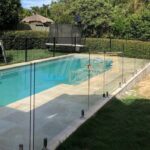On-page SEO is an important skill that every site seeking to make an impression in the highly dynamic digital marketing landscape must learn. Consider it a way of laying a firm foundation of the internet presence. Not only is it about jamming keywords into your content, but it is a strategic plan that is more about creating greater user experience and making your content more visible in search engines.
No, you are not an e-commerce web-site owner but a personal blogger, and knowing about the tricks of on-page optimization can make you stand out of the crowd. Title tags to the creation of powerful content, each of the elements contributes to the creation of traffic and engagement. You are ready to realize the potential of your site? We are going to explore the strategies that should be known to us to properly optimize on-page SEO!
On-Page SEO and the Significance of On-Page SEO to your Web Site
Every
because of on-page SEO your website is a success. It makes sure that search engines find it easy to process and indexes whatever you have. When properly executed, it increases your search-rankings and organic traffic.
Details such as headings and internal links are important. These factors add up to a smooth user experience and an indication to search engines that it is relevant. An optimized page is not only attractive to visitors, it also helps keep the visitors longer.
In addition, the optimization of the page assists in building credibility. The good quality of content and correct positioning of the keywords create a feeling of trust in the users. This trust is converted into conversions, be it that you are selling products or selling ideas.
The on-page SEO is an opportunity that should not be overlooked. Since most of the online experiences begin at the search engine, an impression created using effective strategies is invaluable to any business that is making efforts to achieve success online.
How to Optimize Title Tags and Meta Descriptions to be more visible
The initial opportunity to attract the attention of a user is in title tags and meta descriptions. They are shown in search engines, and thus, it is important to make them attractive.
Start with the title tag. It is supposed to be short, but descriptive; preferably less than 60 characters. Use the appropriate keywords in a natural way; this aids in interpretation of the content of the page by the users and the search engine.
This is followed by the meta description. You can use this snippet to expound on what visitors will get. A target of 150-160 characters is required to make it visible in the search results. Imagine it is a mini-advertisement of your webpage.
Don’t forget about branding! You can also include your brand name, which would increase recognition and trust among the potential visitors. Test out various phrases or calls-to-action to create curiosity but not to sound excessively promotional.
Keep in mind that both elements must be special to each page and this is to prevent repetition within your entire web site.
Developing Quality content
Production of quality content is the very core of effective on-page search engine optimization. It does not only involve filling pages with keywords but it is about offering value to your audience.
The first step is to know what your readers desire. Do a lot of research and explore trending topics in your niche. This information will guide you to produce the most relevant and interested content that appeals.
Concentrate on clarity and readability. Keep language simple, sentences short and divide text into headings or bullet points. This improves the user experience, which retains the visitors.
Use illustrations where necessary. Complex information can be made edible and more enjoyable using images, infographics or videos.
Also remember to refresh your content. Freshness will make searches engine believe that your site is a reputable source of information.
You can expect to increase traffic and receive better search results with the focus on quality as opposed to quantity.
On-Page SEO Technical
In the case of on-page SEO, it is very important to know the technical side of how to optimize a webpage. Technical SEO incorporates a number of aspects that make search engines crawl and index your site in efficient ways.For great assistance you can visit https://tfm.digital/
To begin with, make sure that your site is mobile. As more and more people visit sites using mobile devices, responsiveness is becoming a need, but not an option. Google is mobile first and that is, unless your site is designed to be mobile friendly, then you risk getting a low ranking in search engines.
Another essential factor is page speed. Quick pages are easier to use and improve bouncing rates. Check the speed of your site with tools such as Google PageSpeed Insights, which will provide suggestions on the best way to speed up your site. Use browser caching and compressing of images to make the load times much faster.
On-page optimization is also possible through site structure. The navigation is also improved by a proper hierarchy with clearly structured URLs that may be easily navigated by users as well as search engine crawlers. Use breadcrumb navigation so that the visitors can easily find their way out of the site through the architecture.
SSL certificates are also very important and should not be ignored; the price of HTTPS over HTTP improves the sights of security that are well-liked in ranking algorithms.
Where suitable, use schema markup to give more context to your content to search engines – this may result in rich snippets in search engines, further increasing visibility.
Not only do such technical elements ensure better ranking but also create a more positive experience of using your site in general, which is a win-win scenario!
Image Optimization and Its Effect on SEO ranking
Pictures are important in attracting the visitors of your web site. They may however also slow the page loads when they are not optimized properly. Such delays may increase the bouncing rates and reduce the search engine positions.
Optimizing images consists of the right file format, files compressing them without degrading quality of the image, and accurate dimensions to display their size. The description filenames of every picture must contain key words.
The other important part of image optimization is the alt tags. They give search engines information regarding what the image entails besides enhancing access to those with visual impairments.
Also, well-optimized images can improve the experience of users as they allow loading pages faster and can be seen better on devices. Consequently, this affects the factor of SEO ranking such as dwell time and engagement metrics positively.













Leave a comment